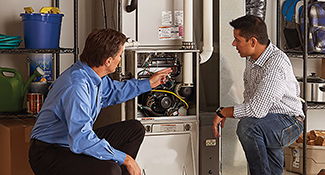Translate Test Data for Your Customers
In the field with your customers, you are their living source of information. Online they can click on another product in an instant if it’s not what they want. The same reaction can happen in person if you fail to provide the information in a way that holds your customer’s interest. You will only succeed if you provide relevant information they understand. That leads them to a decision they can feel good about.
Your ability to translate is essential. Field testing and diagnostics provide very persuasive information, but it arrives in a language most customers don’t understand. Out of respect for them, you must become a translator.
Unless you’re able to communicate test data in simple terms, they’ll click over to your competitor’s product, even though you may be the only one able to offer the solution they seek.
Three Test Data Field Translation Examples
To help others, you can translate measured CFM into something common like beach balls of air per minute. Translate Inches of Water Column into a blood pressure equivalent, and Btu’s to a reduction in miles per gallon.
Your job is to translate the highly technical HVAC mumbo-jumbo into simple ideas and solutions your customers want right now.
The basic translation guidelines are:
1. Translate the description of the value you tested (such as pressure) into a comparable value they know something about and can easily understand (such as blood pressure)
2. Compare the measured test number to the required number. Without that comparison, there is no reference point on which to base a decision
3. Calculate the percentage of what you measured compared to what is required. You calculate this percentage by dividing the measured value by the required value.

CFM (Cubic Feet per Minute) or the required airflow volume is understood by all HVAC techs. But to the public, it means nothing.
Common translations of this test value that most customers will understand include:
‘This room needs 120 buckets of air every minute to be comfortable, and right now, the room is only getting 38 buckets per minute. Or 32% of what it needs.’
Or ‘Your heating system should move the equivalent of 1050 beach balls of air per minute to deliver all its heat into your home, and we measured only 522 beach balls. That’s 50% or half of what the furnace manufacturer specifies.’
Inches of Water Column is the standard unit of air pressure measurement in our industry. Rarely will you find a customer contemplating the pressure in their HVAC system before you make them aware of it. So, explain this one very carefully.
Each piece of air-moving equipment is rated for a maximum operating air pressure, .50-in. WC is the most typical rating. Perhaps you measured pressure at .82-in. WC.
Click Below for the next page:













Recent Comments